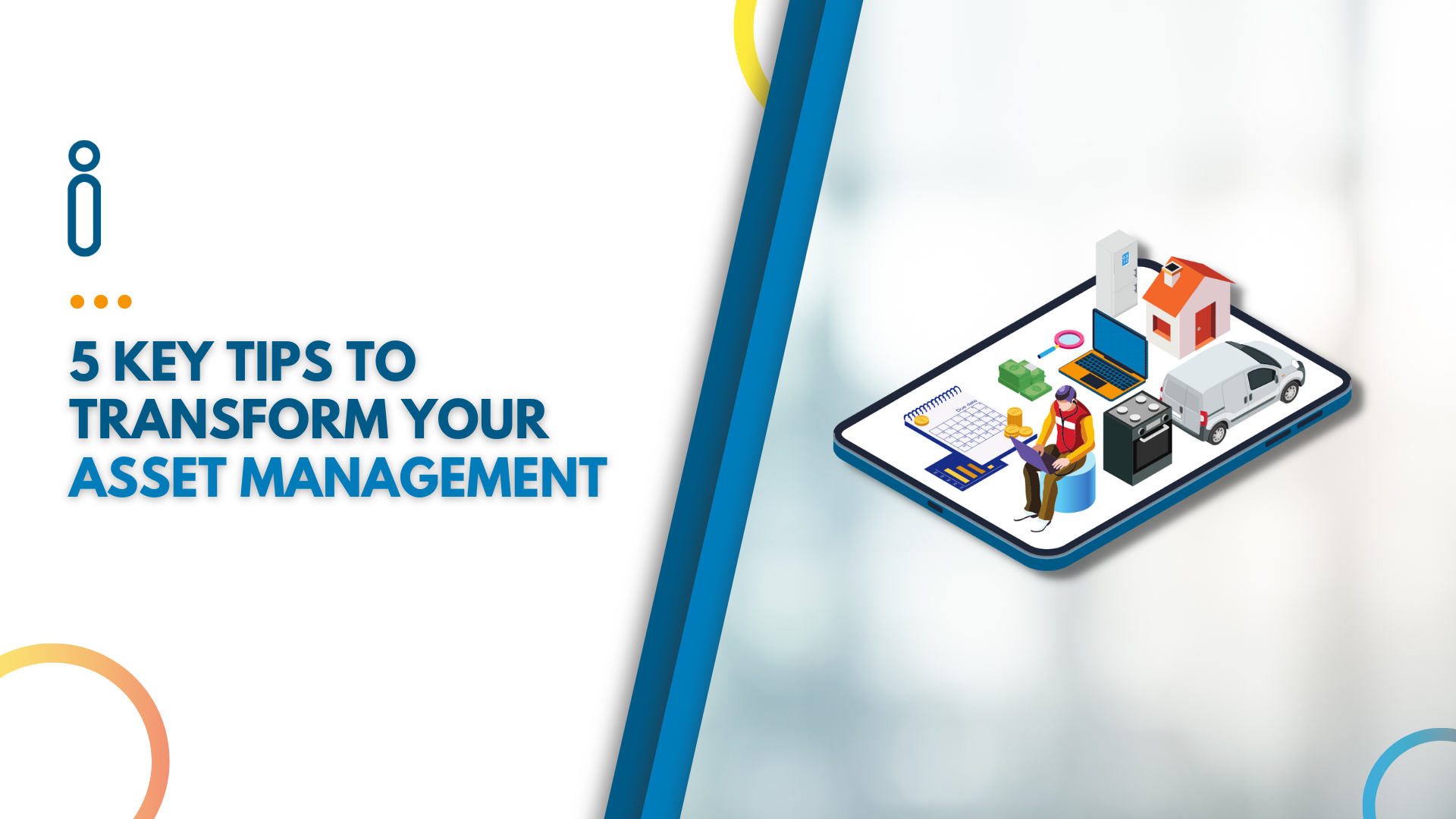5 Tips To Transform Your Asset Management
Posted on 9th February 2023 at 13:05
Asset management is a critical concept for any business or organization looking to maximize the value of their resources. It involves tracking and monitoring physical, financial and human assets, as well as utilizing strategies and software solutions to ensure these assets are put to their highest and best use.
By monitoring, analysing and managing assets, businesses and individuals can reduce costs, increase efficiency,increase profitability, improve service to customers and most importantly ensure that assets are keeping the organization safe and legal .
In this article, we'll explore a number of key tips and tricks, discussing the best ways to transform your asset management.

Table of Contents
1. Know your assets
It may seem obvious, but before you can get the most out of your Assets you must first understand key information about the assets themselves.
First, you should determine the types of assets you have, such as physical, financial and human assets. You should also understand the risks and benefits associated with each of these assets, as well as the costs associated with purchasing, maintaining and repairing them. Additionally, it is important to understand the legal requirements associated with ownership and use of assets. Finally, it is important to have a clear understanding of the role that these assets have in delivering value and service, current market value and potential future value of assets.
2. Develop asset strategies and plans
It is very important to outline and develop different strategies for each asset for a variety of reasons, be it to maximise the use of the asset or how to maintain it.
Different assets, at different times, depending on the organisation objectives could have different optimum strategies. Two great examples of Asset plans you would likely need are Reactive and Planned Preventative Maintenance Care.
Having a Reactive Maintenance plan is important because it provides an effective way to address unexpected and urgent maintenance needs. By having a plan in place for responding to unexpected problems, you can identify the issue quickly and take steps to resolve it as soon as possible. This can help to minimize downtime and reduce costs associated with repairs and maintenance. Of course, Reactive Maintenance only takes place when an asset fails, therefore understanding its criticality and time to fix is crucial.
As for Planned Preventative Maintenance, it helps to reduce the likelihood of expensive repairs by regularly inspecting and replacing worn or damaged parts before they require repair. Additionally, it can help to minimize downtime and improve the efficiency of equipment. This can also help to extend the life of assets by ensuring they are well-maintained and functioning properly. Finally, a planned preventative maintenance plan can also help to reduce safety risks associated with equipment malfunctions. Of course, this can come at a cost as you may be replacing assets sooner than their expected life, but this is weighed against continuity of operation.
Fundamentally, the better the different strategies you have to manage assets the more money you will save and the better your asset and business will perform.

3. Structure your data based on desired objectives
It is important to structure your data based on desired objectives in order to ensure the information is most useful and easily accessible. This includes determining what information is most important and how it needs to be organized in order to make the data readily available. Additionally, organizing data based on objectives helps to make it easier to identify trends and opportunities for improvement, as well as allowing you to focus on the areas of your asset management that need the most attention.
4. Have the right system
All this is made easier when using the right Asset Management System.
But what makes up the “right” Asset Management System?
There are many elements that make a great Assets Management Software Solution but here are a few of the most important:
Firstly it needs to provide you with a clear view of your asset information and performance, allowing for better tracking, better decision making and better overall management.
The right system should help you streamline processes and guide you through the optimal work flow, increasing overall efficiency.
It will enable you to do all your Asset Management in house, without expensive 3rd party suppliers and strive to give your time back to focus on other value-added tasks.
This is why we recommend iSite.
Not only does iSite cover all of the points highlighted above, but it also offers a wide range of features to match your Asset Management needs. Developed with the customer for the customer, it is a comprehensive end-end solution.
The best part it’s completely scalable. iSite is trusted by a wide range of organisations, including small SME’s working in the hospitality industry through to some of the country’s largest retail names. iSite offers the right solution for you, with the right functionality and price to match.
5. Make sure you maintain your data
As with all software systems, a solution is only as good as the data that you feed it. With the right data you will be able to accurately assess the state of your assets in real-time. However, if you use unclean data, incorrect input results in incorrect output, which can lead to incorrect decisions and ultimately losses in revenue.
So keep your data clean!

Want to here more tips and tricks for Property, Asset and Maintenance Management?
Share this post:





